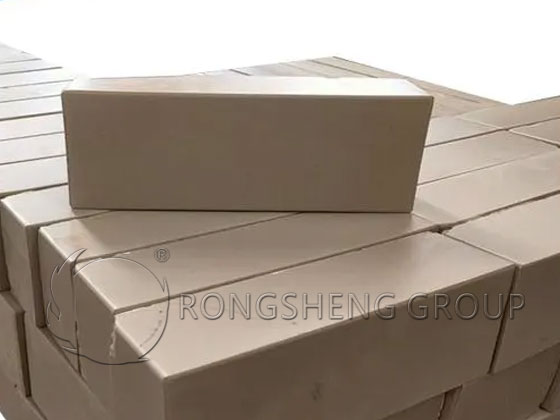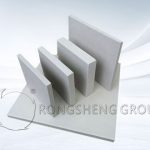In industries where the stakes are high, and the environment is unforgiving, the durability and reliability of materials used in construction are paramount. One of the most critical challenges faced by industrial facilities is the constant threat of corrosion, which can compromise the structural integrity of equipment and infrastructure. To combat this, protective lining systems have become an indispensable component in many industries, offering a robust defense against the corrosive forces at play. Among the most effective materials used in these systems are acid resistant bricks—a specialized solution that ensures longevity and safety in even the harshest environments. Using acid resistant bricks in protective lining systems is a strategy that builds confidence in the resilience and durability of industrial constructions.
Understanding the Need for Protective Lining Systems
Corrosion is a pervasive problem in many industrial sectors, particularly those involving chemicals, acids, and other aggressive substances. Without proper protection, these corrosive agents can eat away at structural materials, leading to significant damage, costly repairs, and even catastrophic failures. Protective lining systems are designed to provide a barrier between the corrosive environment and the structural materials, thereby preventing damage and extending the life of the infrastructure.
These systems are commonly used in various industries, including chemical processing, petrochemical, wastewater treatment, mining, and power generation. In each of these settings, the need for reliable, long-lasting protection against corrosion is critical. Using acid resistant bricks in these protective lining systems is one of the most effective ways to ensure that the integrity of the structure is maintained, even under the most challenging conditions.

The Role of Acid-Resistant Bricks in Protective Lining Systems
Acid resistant bricks are engineered to withstand exposure to harsh chemicals and corrosive environments. Unlike ordinary bricks, which can deteriorate when exposed to acids and other corrosive substances, acid resistant bricks are made from high-quality materials that are inherently resistant to chemical attack. These bricks are typically composed of silica, alumina, and other resistant materials that are fired at high temperatures to create a dense, non-porous structure. This unique composition gives acid resistant bricks their superior durability and makes them an ideal choice for protective lining applications.
-
Chemical Resistance: The Core Advantage
The primary advantage of using acid resistant bricks in protective lining systems is their unparalleled chemical resistance. In industries where acids such as sulfuric acid, hydrochloric acid, and nitric acid are frequently used, the risk of corrosion is high. Conventional building materials can quickly deteriorate under such conditions, leading to leaks, structural damage, and even environmental contamination.
Acid resistant bricks, however, are designed to resist these aggressive chemicals. Their dense, non-porous structure prevents acids from penetrating the material, effectively protecting the underlying structure from corrosion. This makes them an essential component in environments where chemical exposure is a constant threat. For example, in chemical processing plants, acid resistant bricks are often used to line storage tanks, reaction vessels, and pipelines, ensuring that these critical components remain intact and functional despite prolonged exposure to corrosive substances.
-
Thermal Stability and Heat Resistance
In addition to their chemical resistance, acid resistant bricks offer excellent thermal stability and heat resistance. Many industrial processes involve high temperatures, which can exacerbate the effects of chemical corrosion. Materials that are not designed to withstand both high temperatures and corrosive chemicals are at risk of failing under these harsh conditions.
Using acid resistant bricks in protective lining systems helps mitigate this risk. These bricks are fired at extremely high temperatures during their manufacturing process, which enhances their ability to withstand thermal stress without cracking or degrading. This makes them ideal for use in high-temperature environments such as furnaces, kilns, and reactors, where they provide both chemical and thermal protection.
The ability of acid resistant bricks to endure extreme heat without compromising their structural integrity is a key factor in their widespread use in industrial applications. This dual resistance to both chemical and thermal attack ensures that protective linings remain effective, even in the most demanding environments.
-
Mechanical Strength and Durability
Another significant benefit of using acid resistant bricks in protective lining systems is their mechanical strength and durability. In industrial settings, equipment and structures are often subjected to physical wear and tear, in addition to chemical exposure. This is particularly true in industries such as mining, cement production, and steel manufacturing, where abrasive materials can cause significant damage to unprotected surfaces.
Acid resistant bricks are designed to withstand these mechanical stresses. Their hard, dense structure resists abrasion, ensuring that the protective lining remains intact over time. This durability reduces the need for frequent maintenance and repairs, resulting in lower operational costs and less downtime for the facility.
Furthermore, the long-lasting nature of acid resistant bricks contributes to the overall cost-effectiveness of protective lining systems. While the initial investment in these bricks may be higher than that for conventional materials, the reduced need for repairs and replacements over time makes them a more economical choice in the long run.
-
Versatility and Adaptability
Acid resistant bricks are highly versatile and can be used in a wide range of applications within protective lining systems. They come in various shapes and sizes, allowing them to be adapted to different structures and geometries. This versatility makes them suitable for lining surfaces such as storage tanks, chimneys, ducts, and industrial flooring.
Moreover, acid resistant bricks can be used in combination with other protective materials, such as acid-resistant mortars and coatings, to create comprehensive lining systems that provide multiple layers of protection. This adaptability ensures that protective lining systems using acid resistant bricks can be tailored to meet the specific needs of different industries and applications.
-
Environmental and Safety Benefits
In addition to their functional advantages, acid resistant bricks offer environmental and safety benefits. By preventing corrosion and the associated risks of structural failure, these bricks help enhance the safety of industrial operations, protecting both workers and the environment.
For example, in wastewater treatment facilities, acid resistant bricks are used to line tanks and channels that handle corrosive effluents. Using acid resistant bricks in these applications ensures that the facilities remain secure and leak-free, preventing environmental contamination and ensuring compliance with regulatory standards.
Moreover, many manufacturers of acid resistant bricks are committed to sustainable production practices, using recycled materials and energy-efficient manufacturing processes. This makes acid resistant bricks an environmentally responsible choice for industries seeking to minimize their environmental impact while maintaining high standards of safety and durability.
Using Acid Resistant Bricks in Protective Lining Systems
In industries where corrosion and harsh environmental conditions are constant challenges, protective lining systems using acid resistant bricks provide a robust solution for safeguarding equipment and infrastructure. These bricks offer unmatched chemical resistance, thermal stability, mechanical strength, and versatility, making them an indispensable component in a wide range of industrial applications.
By using acid resistant bricks in protective lining systems, industries can build with confidence, knowing that their structures are well-protected against the damaging effects of corrosion. This confidence not only enhances the safety and efficiency of operations but also ensures the long-term durability and reliability of industrial infrastructure. In environments where the stakes are high, acid resistant bricks are the cornerstone of a successful and sustainable protective lining strategy.
Leave Your Requirements on RS Kiln Refractory Bricks And Castable Materials! We Will Reply You In 12 Hours!:







